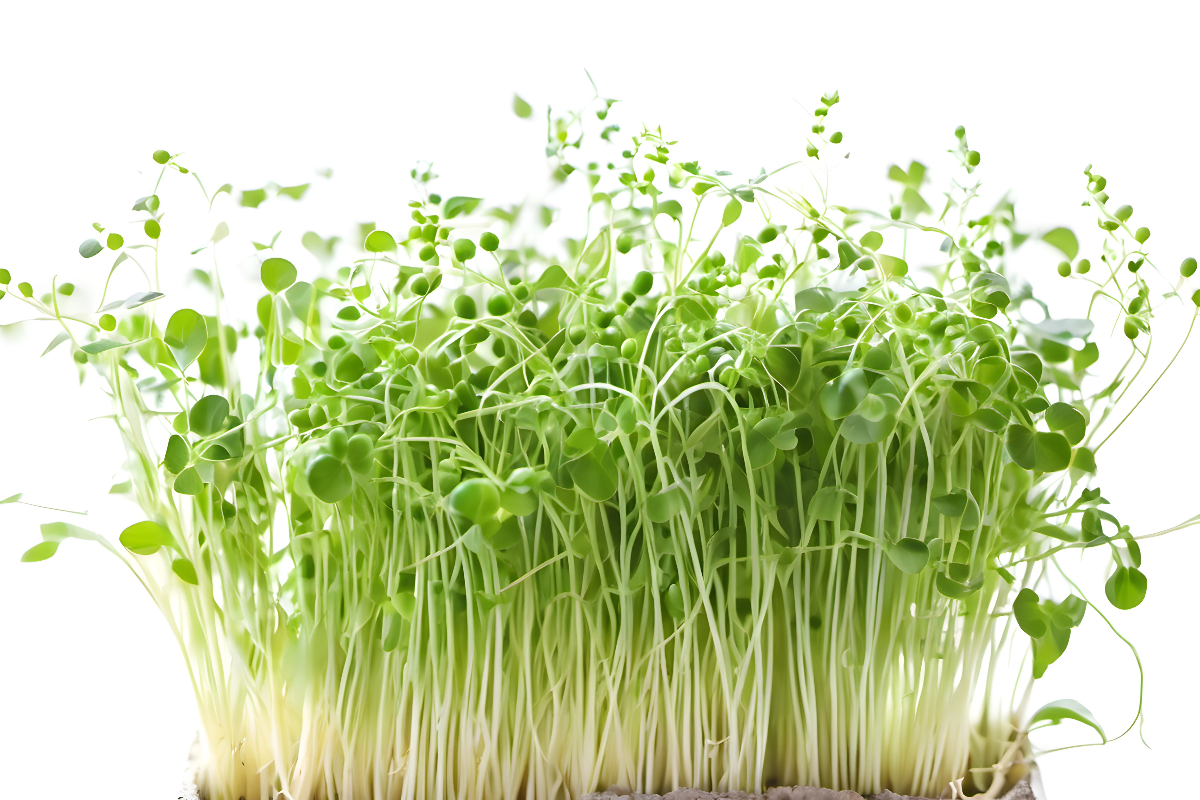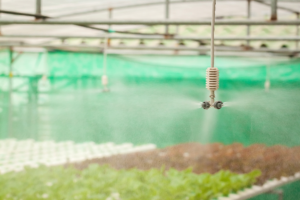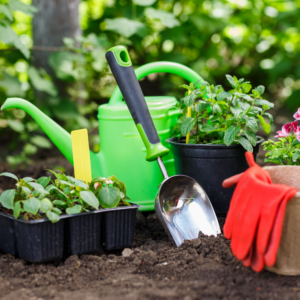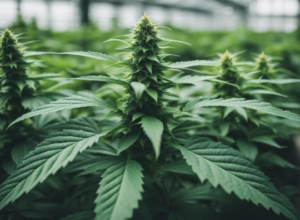Broccoli microgreens are pretty amazing little plants. They’re easy to grow at home, even if you don’t have a green thumb like me. All you need is some seeds, a little bit of soil, and a sunny spot, and you’re good to go.
What really got me hooked on broccoli microgreens is their nutrition. These tiny greens are packed with vitamins and nutrients, even more so than their fully grown counterparts. I couldn’t believe that such a small plant could be so beneficial to my diet!
Adding broccoli microgreens to my meals has been a game-changer. I toss them in salads, sprinkle them on sandwiches, and even blend them into smoothies. They have a mild flavor that goes well with almost anything. Who knew that something so simple could make such a big difference?
What Are Broccoli Microgreens?
Broccoli microgreens are young broccoli plants. They are harvested just a week or two after they start growing. These tiny greens pack a punch when it comes to nutrients.
Nutrients in Broccoli Microgreens:
- Vitamins: A, C, E, and K
- Minerals: Calcium, magnesium, and iron
- Antioxidants: Help fight off toxins
- Fiber: Good for digestion
They are known for their health benefits. One of the key compounds in broccoli microgreens is sulforaphane. This compound is known to have anti-cancer properties.
Broccoli microgreens also contain glucoraphanin. When eaten, glucoraphanin converts to sulforaphane. This makes them a powerful tool in promoting overall health.
Health Benefits of Broccoli Microgreens:
- Boost immune system
- Support heart health
- Improve digestion
- Reduce inflammation
It’s amazing how so much goodness can come from such little plants. Adding them to your diet is an easy way to add more vitamins and minerals to your meals.
Nutritional Profile
Broccoli microgreens pack a punch when it comes to nutrients. They are tiny, but they have more nutrients by weight than adult broccoli.
One of the biggest benefits is the high amount of vitamin C. Just a small serving can give you a lot of the daily recommended amount. That’s great for keeping your immune system strong.
They also contain a good amount of vitamin A, which helps your eyes and skin stay healthy. If you’re looking to boost your iron intake, broccoli microgreens have you covered there too.
Here’s a quick look at some nutrients in broccoli microgreens:
| Nutrient | Benefits |
|---|---|
| Vitamin C | Boosts immune system |
| Vitamin A | Supports eye and skin health |
| Iron | Helps carry oxygen in blood |
| Calcium | Strengthens bones |
| Magnesium | Supports muscle function |
| Zinc | Boosts immune function |
| Protein | Helps build muscles |
They’re also rich in antioxidants, which help fight off harmful substances in your body. This makes them a superfood in my book.
In addition to vitamins and minerals, broccoli microgreens are a good source of protein. They’re a great addition to salads or sandwiches if you want to add some extra nutrition to your meals.
Health Benefits
Broccoli microgreens pack a punch when it comes to health perks, from helping to prevent cancer to boosting the immune system.
Cancer Prevention
Broccoli microgreens are rich in sulforaphane, a compound known for its cancer-fighting properties. This chemical can help reduce the risk of developing various types of cancer, including breast, prostate, and colon cancer.
Studies have shown that sulforaphane promotes the elimination of potential carcinogens. It also boosts the body’s enzymes that detoxify harmful substances. Eating broccoli microgreens regularly can be a natural way to protect against cancer.
Heart Health
These tiny greens are great for the heart. They help lower cholesterol levels, thanks to their high fiber content. This can reduce the risk of heart disease.
Broccoli microgreens also contain antioxidants that help fight oxidative stress, which is harmful to heart cells. They support healthy blood pressure levels, making them a heart-friendly food choice.
Immune Support
Broccoli microgreens are packed with vitamins and minerals, which are crucial for a strong immune system. They are particularly high in vitamins C and E.
These vitamins act as antioxidants, protecting the body’s cells from damage. This helps the immune system fight off infections more effectively.
Digestive Wellness
The high fiber content in broccoli microgreens is excellent for digestion. Fiber helps maintain a healthy gut by promoting regular bowel movements and preventing constipation.
A healthy gut microbiome, supported by the fiber in these greens, can also reduce the risk of chronic diseases. It’s a simple way to keep your digestive system in good shape.
Anti-Inflammatory Effects
Broccoli microgreens have powerful anti-inflammatory properties. This can help reduce the risk of chronic diseases such as arthritis and heart disease. The sulforaphane in these greens also helps lower levels of inflammation in the body.
This means they can help reduce pain and swelling, making them a beneficial addition to any diet.
Cultivating Broccoli Microgreens

Growing broccoli microgreens at home is pretty straightforward and rewarding. To start, you’ll need quality seeds, a good growing tray, and the right care at each stage.
Selecting Your Seeds
I always begin with high-quality broccoli microgreen seeds. Ordering from a trusted supplier is important because it ensures good germination rates. Look for seeds labeled specifically for microgreens to get the best results.
Setting Up the Growing Tray
Next, I set up my growing tray. I use a shallow tray with drainage holes to prevent water from pooling. A layer of paper towel at the bottom helps with water retention. I fill the tray with a soil-based growing medium up to about an inch deep.
Planting and Germination
Now, it’s time to plant. I evenly scatter the seeds over the soil surface. Using a spray bottle, I mist the seeds gently to moisten them. Cover the tray with a lid or another tray to keep it dark and humid, which aids germination.
Caring and Watering
Once germination starts, I remove the lid. I place the tray in a spot with indirect sunlight. Watering is crucial; I use the spray bottle to keep the soil moist but not soggy. The key is to mist once or twice a day.
Harvesting Your Crop
After about 7-10 days, my microgreens are ready for harvest. I look for the first set of true leaves. Using a clean pair of scissors, I cut the greens just above the soil. They’re fresh and ready to eat right away.
Using Broccoli Microgreens
Broccoli microgreens are small but pack a nutritious punch. They add a fresh crunch and a mild, earthy flavor to many dishes.
In the Kitchen
I love adding broccoli microgreens to my salads and sandwiches. Their mild flavor makes them perfect for these dishes. Just sprinkle a handful over your greens or tuck them into your favorite sandwich for extra crunch.
For a refreshing smoothie, try blending a cup of microgreens with some fruit and yogurt. It’s an easy way to boost your nutrients without changing the taste too much.
Creative Recipes
You can get creative with broccoli microgreens in your recipes. One of my favorites is microgreen pesto. Blend them with olive oil, garlic, nuts, and parmesan. It makes a delicious and unique twist on traditional pesto.
They’re also great as a garnish. Sprinkle them over soups or main dishes for a touch of elegance and added flavor.
Storing Tips
To keep broccoli microgreens fresh, store them in the fridge. I usually put them in an airtight container with a paper towel to absorb moisture. They last about a week this way.
Don’t wash them until you’re ready to use them. Excess moisture can make them spoil faster. Use these tips, and you can enjoy that fresh, crunchy taste longer.
Tips and Tricks
Growing broccoli microgreens can be simple if you start with the right soaking and drainage techniques and maintain proper lighting and temperature conditions.
Proper Soaking and Drainage
Start by soaking broccoli seeds for about 8-12 hours. I find this helps them sprout faster. Use a clean container and fill it with room temperature water. Once soaked, you’ll need to drain the seeds thoroughly.
Place the seeds on a fine mesh strainer and let the water drip out completely. This prevents mold. Spread the seeds evenly on a moist growing medium like soil or a hydroponic pad. Make sure the medium isn’t waterlogged, as this can also cause mold.
Mist the seeds lightly with water daily until they sprout. Good drainage is key; too much water can drown the seeds. Happy seeds lead to healthy microgreens.
Lighting and Temperature
Proper lighting is crucial. I use grow lights to give my broccoli microgreens about 12-16 hours of light each day. If you prefer natural sunlight, place them in a sunny spot where they get indirect light for most of the day.
Maintain a temperature range of 60-75°F (15-24°C). Too much heat can dry out the microgreens, while cool temperatures can slow their growth. I recommend using a small fan for airflow to keep the environment balanced.
Check daily to ensure the microgreens are neither too hot nor too cold. Good lighting and temperature control will ensure fresh, vibrant microgreens ready for harvesting in about 7-14 days.
Getting Kids Involved
I love getting my kids involved in growing broccoli microgreens. It’s a fun way for them to learn about gardening and nature.
Starting with seeds and soil is a great way to teach basics. My kids enjoy filling trays with soil and sprinkling seeds. They feel excited knowing they’re planting something that will grow.
Watering the microgreens is another task my kids love. I show them how to use a spray bottle to keep the soil moist without overwatering it.
We also set up a growth chart. My kids measure the height of the sprouts every few days and write it down. It’s like a mini science project!
When the microgreens are ready, we harvest them together. They love picking the tiny greens and seeing how much we’ve grown. We often use a small pair of child-safe scissors for this.
Cooking with the microgreens is the last step. I let my kids sprinkle broccoli microgreens on salads or sandwiches. They feel proud they’ve contributed to our meals. Plus, it makes them more interested in eating vegetables!
Troubleshooting Common Problems
When growing broccoli microgreens, I’ve faced a few challenges. Here’s what to watch out for:
Poor Germination
If seeds aren’t germinating well, make sure they’re getting enough moisture. I usually cover the seeds with a damp paper towel to keep them humid. Soil should be kept moist too, but not soggy.
Mold and Mildew
High humidity can cause mold. I’ve found that it’s important to keep good airflow. Using a small fan or opening a window can help reduce humidity and keep the air moving.
Leggy Microgreens
If my microgreens start growing too tall and thin, it’s often because of insufficient light. Placing them closer to a bright window or using a grow light can help them grow stronger.
Yellowing Leaves
Sometimes, the leaves turn yellow. This can happen if temperatures are too low. I make sure to keep the room warm, around 70°F (21°C). Temperature plays a big role in how well they grow.
Pests
Some pests like aphids can be a problem. If I see any, I spray them with a mild soapy water solution. Keep the area clean to avoid attracting insects.
Disease Prevention
To prevent diseases, I always use clean trays and fresh soil for each batch. Overcrowding can also lead to disease, so I spread the seeds evenly.
Root Rot
Over-watering can lead to root rot. I water from the bottom by placing the tray in a shallow dish of water, letting the soil absorb what it needs.
By addressing these common issues, growing broccoli microgreens can be a smoother process.
FAQs Compiled
How do I grow broccoli microgreens at home?
I follow these steps:
- Soak broccoli seeds in water for 8-12 hours.
- Spread seeds evenly on soil.
- Mist with water twice daily.
- Harvest in 7-10 days.
What supplies do I need to grow them?
- Broccoli seeds
- Potting soil
- Planting tray
- Spray bottle for watering
Do broccoli microgreens need sunlight?
Yes, they need some light to grow well. A sunny windowsill or a grow light works great.
How do I harvest broccoli microgreens?
I use scissors to cut the greens just above the soil. They are ready when they’re about 1-3 inches tall.
Tips for growing healthy microgreens:
- Keep the soil moist but not waterlogged.
- Ensure good air circulation to prevent mold.
- Use clean tools to avoid contamination.
Troubleshooting common problems:
- Mold Growth: Reduce watering and improve air flow.
- Leggy Sprouts: Ensure they receive enough light.
- Poor Germination: Check the quality of seeds and soak them properly before planting.
Can I store broccoli microgreens?
Yes, I store my harvested microgreens in the fridge. They stay fresh for up to a week in a sealed container.






